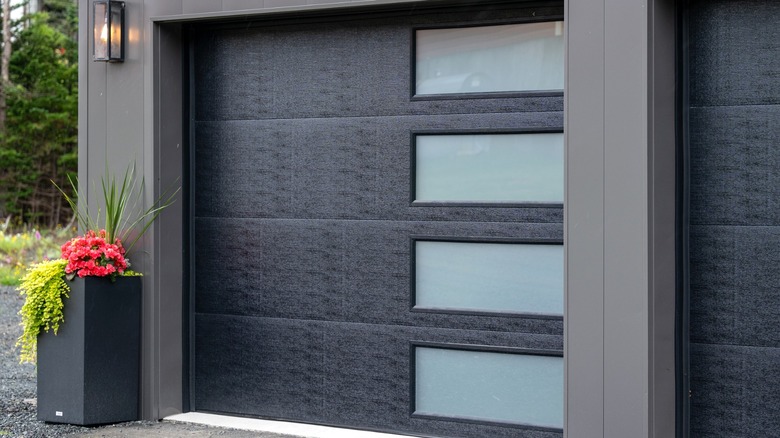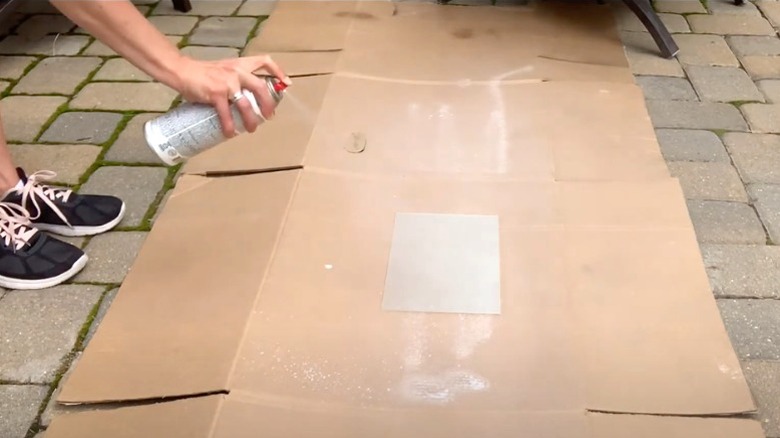How To Safely Use Frosted Glass Spray
Many homeowners love installing frosted windows, and they definitely have their share of advantages. Frosted windows can block UV rays and diffuse harsh sunlight in areas such as entryways, kitchens, and home offices. They're ideal for anyone who wants the aesthetics and visibility that natural sunlight provides but with privacy that transparent windows simply don't offer. The good news is that you can create your own faux frosted look with a can of frosted glass spray paint, like Rust-Oleum Frosted Glass Spray Paint, for a fraction of the cost that it'd take to renovate your windows with film. However, when working with frosted glass spray, you'll need to take proper safety precautions and ensure that you're applying the paint correctly for the best results.
This frosted spray paint goes on similarly to regular paint. And like any other canned variety, it can emit chemical fumes that could be harmful if inhaled, which is more likely when you use it in an unventilated area without a respirator mask. It's also best to start this DIY during ideal conditions when working outdoors, with temperatures between 50 and 90 degrees Fahrenheit and humidity levels under 65%. This will ensure the paint will dry quickly and harsh weather, such as rain, heavy winds, and excessive humidity, won't ruin your hard work.
Note that you will need at least one container of mineral spirits for cleaning up once your project is completed. Other items for this hack include a plastic tarp, glass cleaner, and a couple of cleaning cloths. With this easy DIY, you can create more privacy in your home without breaking the bank.
Steps to safely used frosted glass spray paint
Start your frosted glass project by covering your floor with a tarp and the window frames (and any other areas near the windows) with newspaper and painter's tape. If you're indoors, be sure to open a window or two for proper ventilation even if you're planning to wear a respirator mask. Next, clean the glass using a soft cleaning cloth with a commercial product or an easy DIY glass cleaner containing equal parts vinegar and water. Then, put on a respirator mask as well as a pair of protective gloves before painting.
Next, shake the spray paint can thoroughly for several seconds. While holding it about 10 to 12 inches away from the window, spray it onto the glass in a side-sweeping motion. Overlap your spray areas by a few inches to ensure there's even coverage and no visible gaps. Let the first coat dry for a few minutes, and then apply a second coat using the same technique. If an additional coat is needed, perform all of these steps again, giving the previous coat time to dry before adding another. After the last coat of paint dries, remove the paper and painter's tape. Once you're finished, use mineral spirits to remove any accidental paint sprays.

